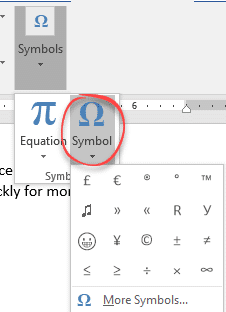- Pages is a powerful word processor that lets you create stunning documents, and comes included with most Apple devices. And with real-time collaboration, your team can work together from anywhere, whether they’re on Mac, iPad, iPhone, or using a PC.
- Start quickly with the most recent versions of Word, Excel, PowerPoint, Outlook, OneNote and OneDrive —combining the familiarity of Office and the unique Mac features you love. Be more productive Find the feature you need fast and create documents more easily with built-in automated design and research tools.
The trusted Word app lets you create, edit, view, and share your files with others quickly and easily. Send, view and edit Office docs attached to emails from your phone with this powerful word processing app from Microsoft. With Word, your office moves with you. Whether you’re a blogger, writer.
-->Note
Office 365 ProPlus is being renamed to Microsoft 365 Apps for enterprise. For more information about this change, read this blog post.
Symptoms
After you install a font into the Fonts folder in the operating system and start Microsoft Word for Mac, the font unexpectedly is not available in the Font dialog box, in the drop-down list, or in the Formatting Palette.
Cause
Third-party fonts are not directly supported in Microsoft Office for Mac applications. Some third-party fonts may work in one application and not in another. Other third-party fonts are installed in a 'family'. A family usually consists of the third-party font itself together with some or all of its variations (bold, italic, and so forth). Sometimes, a font may be displayed in Microsoft Word, Microsoft PowerPoint, Microsoft Excel, or Microsoft Entourage, but you may be unable to use one of its variations, such as italic.

Office does not support custom fonts. This includes any fonts that were manipulated by a font or typography program.
Note
Microsoft Office for Mac technical support does not provide support for installing or configuring third-party fonts.
Basic font troubleshooting
If the following methods don't resolve your font issue, contact the font manufacturer or the website from which you purchased the fonts.
First, restart your computer, and then test the font again. Some installations are not complete until the computer is restarted. This also makes sure that all applications are restarted after the installation.
Method 1
Clear the font caches. To do this, quit all Microsoft Office applications. On the Home menu, click Go > Applications, and then click Apple's Font Book.
On the Edit menu, click Select Duplicated Fonts.
On the Edit menu, click Resolve Duplicates.
To remove all the fonts from the computer that Font Book just disabled, follow these steps:
- After the duplicates have been resolved, select each disabled font, click File > Reveal in Finder, and then drag it to the trash.
- You may notice that Font Book sometimes turns off the newer copy of the font instead of the older one. If you prefer the newer copy, drag the older one to the trash, and then re-enable the new one.
Restart the computer. Apple OS X will rebuild its font cache, and Word will rebuild its font cache from that.
For best performance in Word, try to run with all your fonts enabled all the time. Each time that Word starts, it compares its font cache with the system font cache. If the two don't match, Word will regenerate its own font cache, which can take a few seconds. If you have dynamically enabled fonts, the system font cache will appear different nearly every time that Word runs this comparison.
You must do this every time you install an update, because the Microsoft installer tries to restore the disabled fonts each time.
Method 2
Restart the computer in Safe mode. Then, restart the computer normally. For more information about how to restart your computer in Safe mode, click the following article number to view the article in the Microsoft Knowledge Base:
2398596 How to use a 'clean startup' to determine whether background programs are interfering with Office for Mac
Method 3
Microsoft Word On Apple Computer
Create a new user account to determine whether the problem is associated with an existing user account.
The font is damaged, or the system is not reading the font
If the font is not a custom font and does not appear in your Office program, the font may be damaged. To reinstall the font, see Mac OS X: Font locations and their purposes.
The third-party products that this article discusses are manufactured by companies that are independent of Microsoft. Microsoft makes no warranty, implied or otherwise, regarding the performance or reliability of these products.
Sometimes called Winword, MS Word, or Word, Microsoft Word is a word processor published by Microsoft. It is one of the office productivity applications included in the Microsoft Office suite. Originally developed by Charles Simonyi and Richard Brodie, it was first released in 1983.
Microsoft Word is available for Microsoft Windows, Apple macOS, Android, and Apple iOS. It can also run on the Linux operating system using WINE.
What is Microsoft Word used for?

Microsoft Word allows you to create professional-quality documents, reports, letters, and résumés. Unlike a plain text editor, Microsoft Word has features including spell check, grammar check, text and font formatting, HTML support, image support, advanced page layout, and more.
What does the Microsoft Word editor look like?
Below is an overview of a Microsoft Word 2010 document.
TipSee our Ribbon page for further information on the Ribbon. For an overview of the items contained on the Ribbon, see: Overview of the Microsoft Office Ribbon.
Where do you find or start Microsoft Word?
If you have Microsoft Word or the entire Microsoft Office package installed on Microsoft Windows, you can find Microsoft Word in your Start menu.
Keep in mind that new computers do not include Microsoft Word. It must be purchased and installed before running it on your computer. If you do not want (or cannot afford) to purchase Microsoft Word, you can use a limited version for free at the Microsoft Office website.
NoteThere are also free word processing programs you can try that are very similar to Microsoft Word. See: Where can I get a free word processor?
If Microsoft Word is installed on your computer, but you can't find it in your Start menu, use the following steps to launch Microsoft Word manually.
- Open My Computer.
- Click or select the C: drive. If Microsoft Office is installed on a drive other than the C: drive, select that drive instead.
- Navigate to the Program Files (x86) folder, then the Microsoft Office folder.
- In the Microsoft Office folder, if there is a root folder, open that folder. Then open the OfficeXX folder, where XX is the version of Office (e.g., Office16 for Microsoft Office 2016). If there is no root folder, look for and open a folder having 'Office' in the name.
- Look for a file named WINWORD.EXE and click or double-click that file to start the Microsoft Word program.
What are the uses of Microsoft Word?
Microsoft Word is a word processor, and, like other word processors, it's capable of helping users create a variety of different types of documents. For example, users can create a résumé, business contract, instruction document, or a letter to another person. We've included a list of the top uses of a word processor on our word processor page.
How many lines are there on a page in Microsoft Word?
By default, there are 29 lines on one page in Microsoft Word.
What type of files can Microsoft Word create and use?
Early versions of Microsoft Word primarily created and used the .docfile extension, while newer versions of Word create and use the .docx file extension.
More recent versions of Microsoft Word can create and open the following types of files:

- .doc, .docm, .docx
- .dot, .dotm, .dotx
- .htm, .html
- .mht, .mhtml
- .odt
- .rtf
- .txt
- .wps
- .xps
- .xml
Example of a Microsoft Word .doc file
You can download an example of a Microsoft Word .doc document by clicking the Microsoft Word .doc file link.
Why use Word instead of a plain-text editor?
Microsoft Word offers many features not found in a traditional text editor or a plain-text file. Reasons to use Microsoft Word instead of a plain-text editor include the ability to change the formatting (e.g., center), change the font type, size, and color, insert pictures, and much more.
TipThe features above are also available in a rich-text editor, such as WordPad, which is included with Microsoft Windows.
Why use Word instead of a WordPad?
A rich-text editor, like WordPad, offers many of the same basic features as Microsoft Word. Where Microsoft Word differs is the ability to do more advanced features. Some of the advanced features include mail merges, spellchecker, styles, tables, headers & footers, WordArt, columns, margins, and more.
What are the different versions of Microsoft Word?
Microsoft Word On Apple Macbook Pro
Microsoft Word has had several versions throughout its history. The different releases, with release dates are listed below.
Windows versions
- Word 2019, released in 2018
- Word 2016, released in 2016
- Word 2013, released in 2013
- Word 2010, released in 2010
- Word 2007, released in 2006
- Word 2003, released in 2003
- Word 2002, released in 2001
- Word 2000, released in 1999
- Word 98, released in 1998
- Word 97, released in 1997
- Word 95, released in 1995
- Word 6.0, released in 1993
- Word 2.0, released in 1991
- Word 1.1, released in 1990
- Word 1.0, released in 1989
Mac versions
- Word 2019, released in 2018
- Word 2016, released in 2015
- Word 2011, released in 2010
- Word 2008, released in 2008
- Word 2004, released in 2004
- Word v. X, released in 2001
- Word 2001, released in 2000
- Word 98, released in 1998
- Word 6, released in 1993
- Word 5.1, released in 1992
- Word 5, released in 1991
- Word 4, released in 1989
- Word 3, released in 1987
- Word 1, released in 1985
Related pages
Desktop publishing, Editor, Google Docs, Office, Office 365, Office Online, Software terms, WordPad, Word processor, Word processor terms
